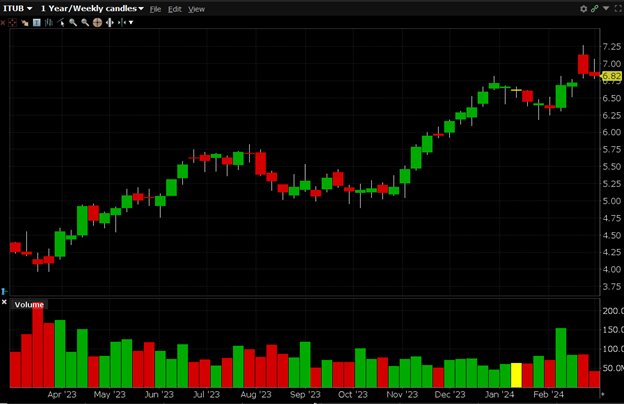This morning the 15,000 Itaú Unibanco Holding S.A. (Symbol: ITUB) April 19 ’24 6/7 put spreads traded for $0.29. The overall delta of the spread is 50, so the trade is the equivalent of 750,000 shares of stock. The spread will expire prior to the expected earnings release on May 6th, and it is unclear from the open interest whether this is an opening or closing trade. ITUB was trading for $6.87 at the time the spread traded.
ITUB is currently trading at $6.82. ITUB has a 52-week high of $7.26 and a 52-week low of $4.09.

Disclosure: Interactive Brokers
The analysis in this material is provided for information only and is not and should not be construed as an offer to sell or the solicitation of an offer to buy any security. To the extent that this material discusses general market activity, industry or sector trends or other broad-based economic or political conditions, it should not be construed as research or investment advice. To the extent that it includes references to specific securities, commodities, currencies, or other instruments, those references do not constitute a recommendation by IBKR to buy, sell or hold such investments. This material does not and is not intended to take into account the particular financial conditions, investment objectives or requirements of individual customers. Before acting on this material, you should consider whether it is suitable for your particular circumstances and, as necessary, seek professional advice.
The views and opinions expressed herein are those of the author and do not necessarily reflect the views of Interactive Brokers, its affiliates, or its employees.
Disclosure: Options (with multiple legs)
Options involve risk and are not suitable for all investors. For information on the uses and risks of options, you can obtain a copy of the Options Clearing Corporation risk disclosure document titled Characteristics and Risks of Standardized Options by clicking the link below. Multiple leg strategies, including spreads, will incur multiple transaction costs. “Characteristics and Risks of Standardized Options”

